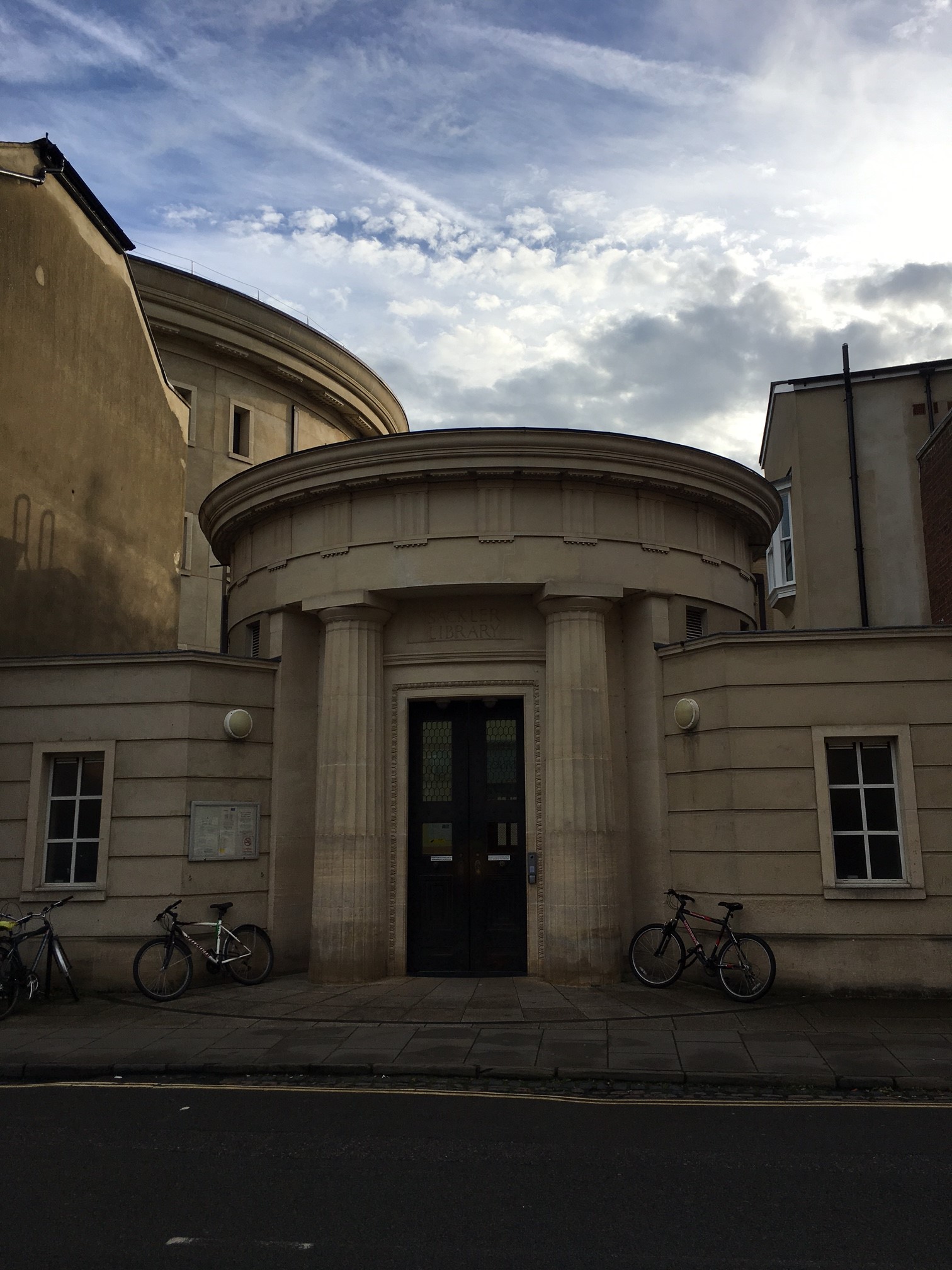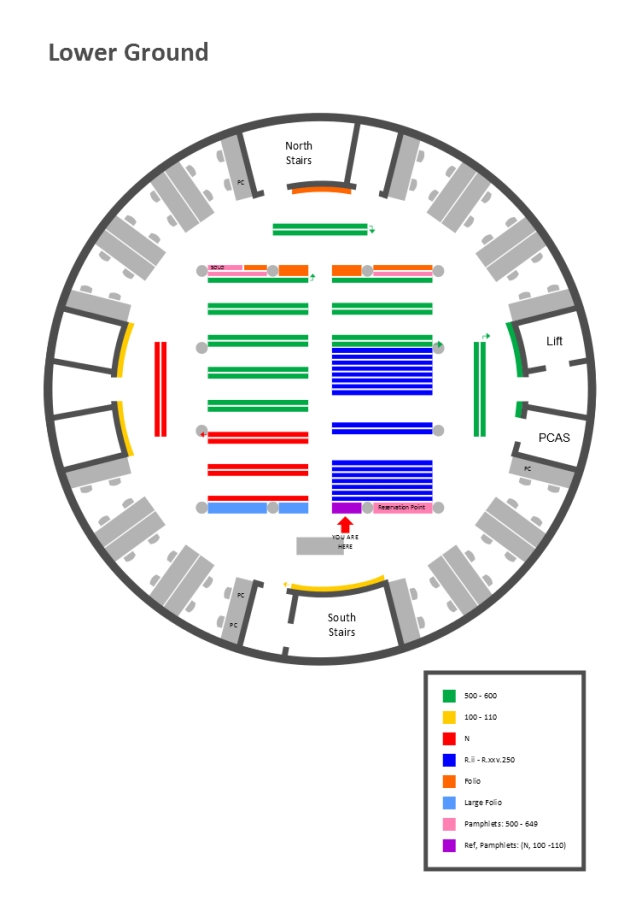Stepping through the neoclassical facade of the Sackler Library and into the library beyond must feel for some like entering the TARDIS. It is hard to get a sense of the interior’s size from the street outside this building, which is nestled up against the back of the Ashmolean Museum, just around the corner from some of the main tourist spots in Oxford.

I’m very excited to have the opportunity to work in this wonderful research environment as the graduate library trainee this year. My name is Emily Pulsford and I studied Classics at Cambridge a few years ago. Against the odds, my degree subject now feels relevant and useful! My previous job was for a small publishing firm that made textbooks and information books for primary schools. As part of that, I visited school library services and communicated with school librarians, which is what inspired me to explore the possibilities of a career in librarianship/information.

So far at the Sackler, I have spent much time trying to familiarise myself with the library layout and collections. Two aspects of the library itself make this a harder task than it sounds. Firstly, because the library contains collections that came from all over the place originally, many different shelf marks and classifications systems are in use and the organisation seems illogical at times. Secondly, the library consists of five circular floors, with few distinctive landmarks to help get your bearings. Add in my sub-par sense of direction and spatial awareness, and you can see why this has proven more of a challenge that it first appeared.
To aid new readers (aka the fast-approaching freshers) who may have the same problem with orientation, I have been printing out and making up booklets with library information and, most importantly, floor plans!!
When I’m not wandering around the library trying not to look too lost when shelving books, I spend time at the issue desk. Here I do the basics of loaning and returning books, as well as helping readers answer their (varied) enquiries. The Sackler is also a pick-up point for books from the Bodleian’s remote storage facility at Swindon, so I help unload delivery crates and get books on the shelves ready for readers to use, reversing this process when it is time for them to go back to Swindon.
What with the build-up to the start of term, getting used to the library layout and workings, and lots of centralised training sessions with my lovely fellow trainees, it’s been a hectic first few weeks for me here at the Sackler. However, I have enjoyed getting stuck in with library life and getting to know the large and experienced team here, and I look forward to all the other opportunities this year brings!
[NB the Sackler Library has now been renamed to the Art, Archaeology and Ancient World Library]




Recent Comments